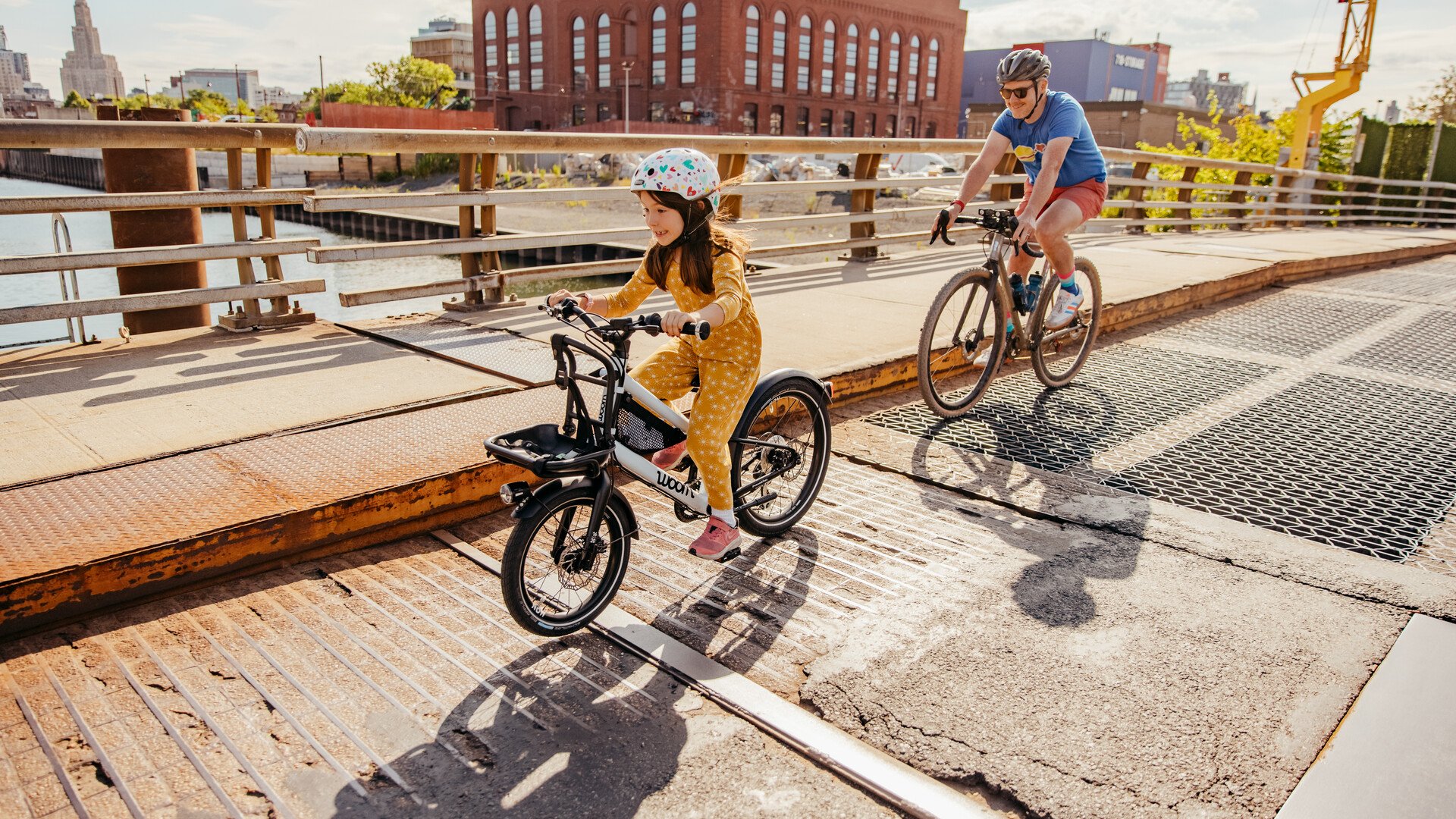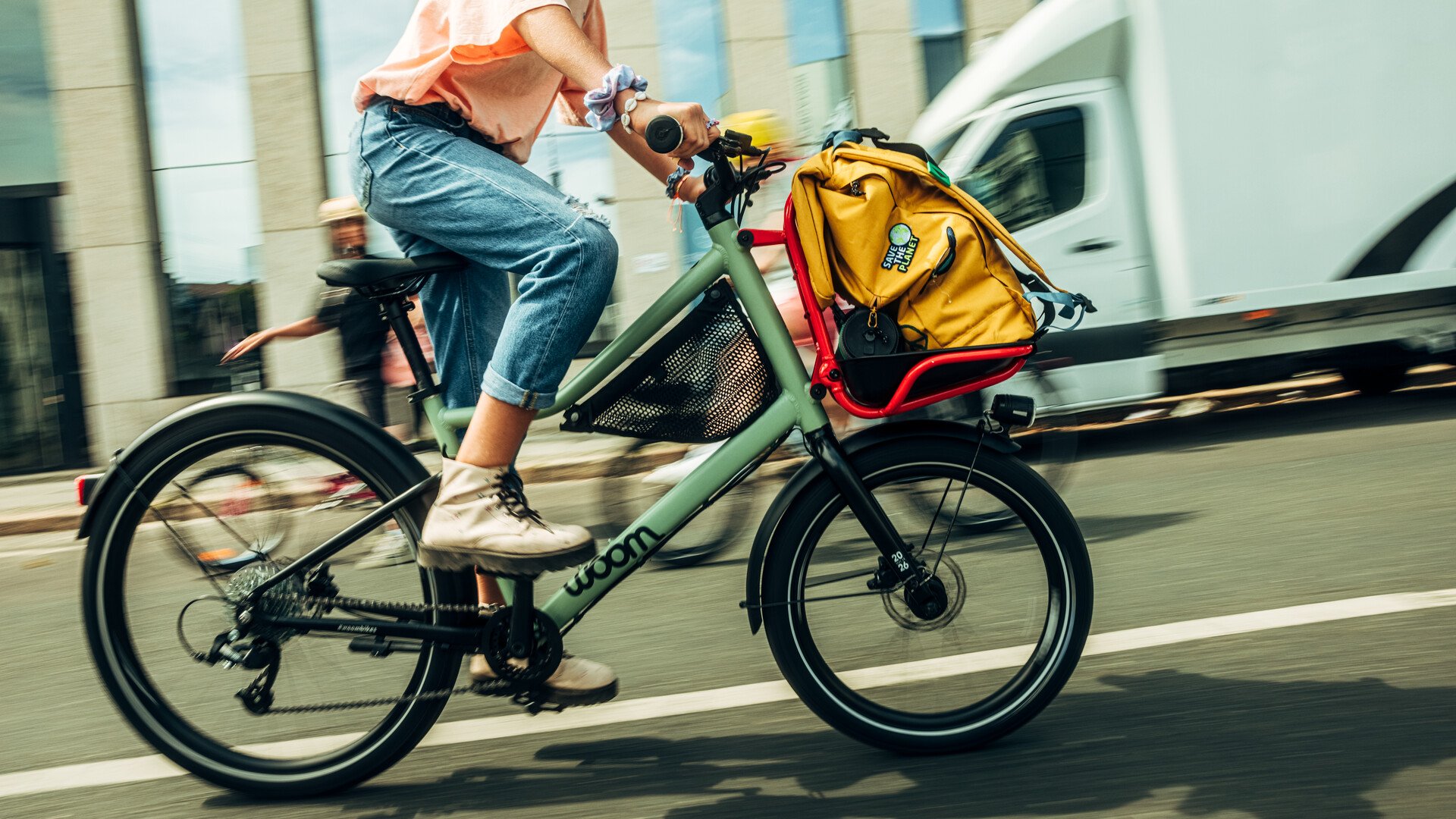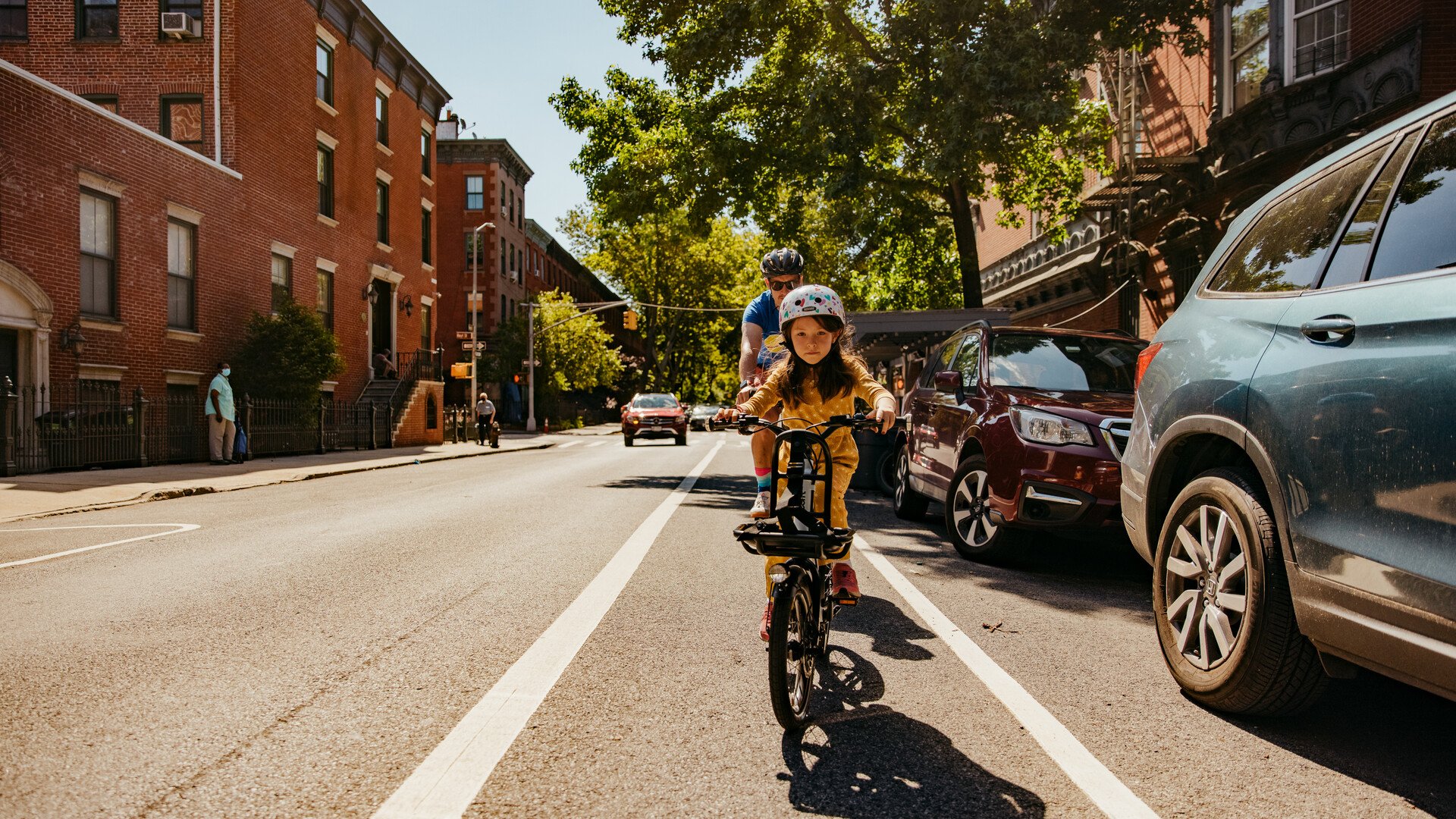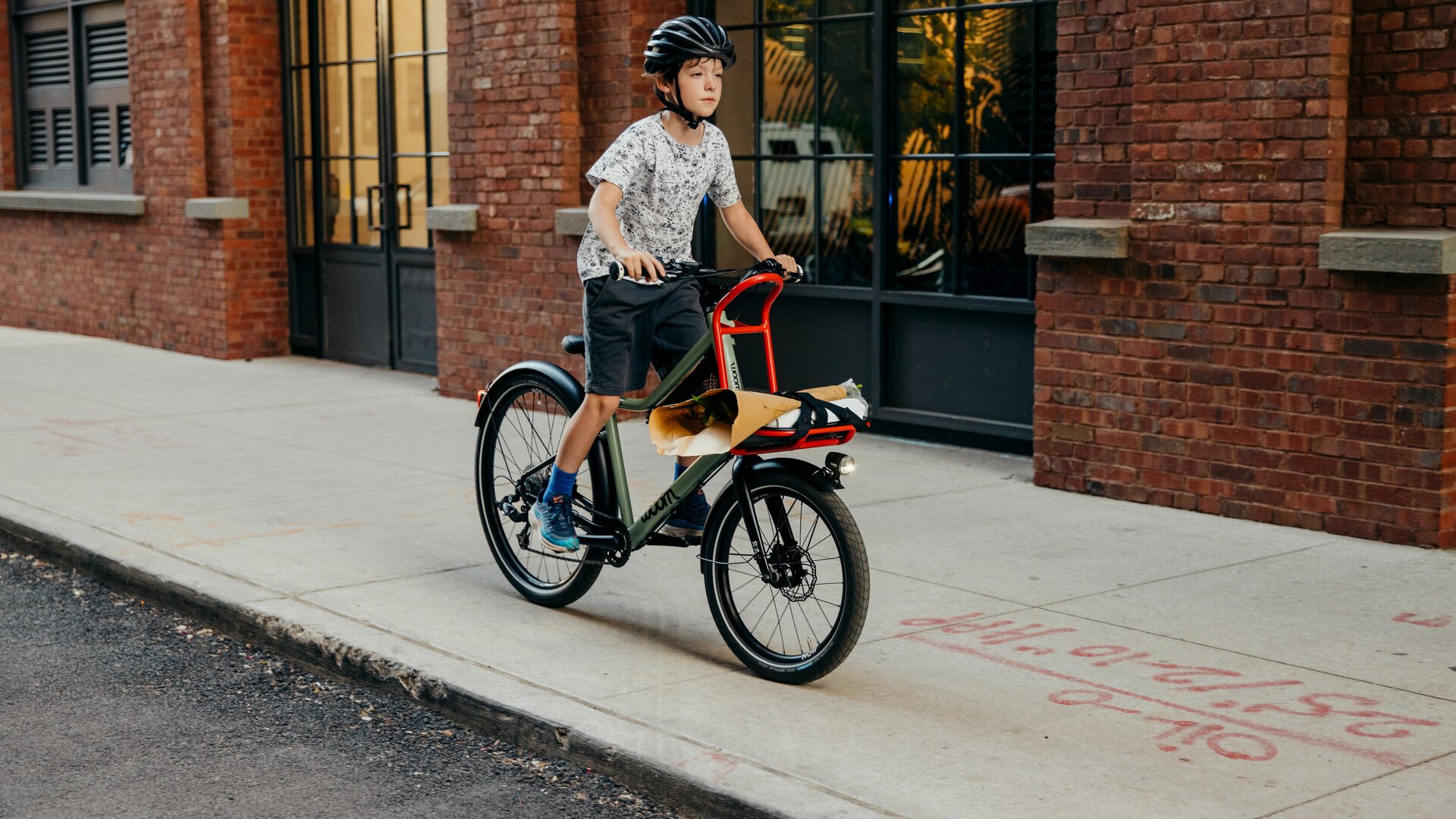Bicycle Rules of the Road for Kids
by Charlie LaNoue

Whether sending your child off to their first day of daycare or college, it can be both exhilarating and nerve-wracking to watch them go off on their own. Witnessing one’s child venture out on their bicycle can give parents a similar mixture of excitement and anxiety. To maximize the former and minimize the latter, we’ll break down all the bicycle rules of the road kids should know before they’re trusted to ride on their own.
Of course, a properly fitting bicycle helmet is a must-have, as well as other protective gear, such as bike gloves, bike lights, and reflective gear. It’s also vitally important that the bicycle itself is tuned up and adjusted to your ever-growing child. With that covered, it’s time to hit the road!
13 General Rules of the Road for Kids on Bicycles
Equally as important as teaching your child to follow the rules of the road is modeling them yourself. Your children are always watching you, so it’s important to always do what you’d like your kiddo to do. Always wear a helmet (even if you didn’t when you were a child) and always signal turns (even if no cars appear present). The following are general guidelines for riding a bicycle on public streets and roads.
#1 Go With the Flow:
It’s important to always ride in the same direction as traffic. This means riding on the righthand side of the road and never riding against the flow of traffic.
- Other road users are not looking for a vehicle on the wrong side of the road.
- Important to note: When walking or running on streets without a sidewalk or side path, it is advisable to go against the flow of traffic for visibility and safety, so it is essential to teach your children the opposite is true for cycling. Going with the flow of traffic allows drivers more time to see cyclists and adjust accordingly.
#2 Stay to the Right:
When correctly riding on the right lane of the street, it’s important to consider lane position. Cyclists generally are better off riding further to the righthand side, allowing any passing motor vehicle to pass safely and quickly.
- It is, however, important to teach children not to ride too close to the curb, to avoid a pedal strike incident, and to avoid the inevitable broken glass and road debris that ends up in the street gutters adjacent to the curb.
- In the case of narrow lanes (such as on small side streets), it can sometimes be advisable to “take the lane.” When taking the lane, the bicyclist may ride in the center of the lane to prevent cars from passing dangerously close.
#3 Ride Single File:
As a general rule, children should ride single-file instead of riding side-by-side. Even if no cars appear present, they tend to sneak up on you when riding a bike!
- Exceptions to this rule include riding on low-speed or low-traffic streets, private property, bike paths, or a wide bike lane.
#4 Look Before Turning:
Before making a turn, it’s important to be aware of other cars. First, glance backward, see if any cars are approaching, and yield to them when appropriate.
- This is especially important for left turns, which almost always involve crossing an active lane of traffic.
- Wishing your kiddo had eyes in the back of their head? Several companies make rearview mirrors for bicycles. These are typically mounted to the helmet or the handlebar end and provide extra rear visibility for the Rider.
#5 Use Hand Signals:
Bicyclists should always signal their intention of a turn before turning, just as in a car. It’s important to consistently do so when approaching an intersection, not just when you think another road user will be affected.
- Simply point the direction you plan on turning to with the corresponding hand, at least 75-100 feet before the intersection. To signal a stop or a slowdown, extend the left arm downward.
- Although right turns were previously signaled by placing the left hand vertically (a bit confusing), extending the right hand outward is now the most common method of signaling a left turn.
#6 Follow All Traffic Laws:
Although cars and bikes are quite different, drivers and cyclists are both expected to follow the same basic traffic laws.
- In general, cyclists are expected to stop at every stop sign, obey each traffic light, yield to oncoming cars when turning, adhere to lane markings, and follow other traffic signs.
- Especially in larger cities, exceptions occur, such as specific stoplights with a bicycle symbol, one-way streets with a cross-directional bike lane (usually marked “Do Not Enter - Except Bicycles), and other bike-friendly traffic laws.
- Pay special attention when turning left. Some intersections in urban areas have a special location designated for cyclists to wait while yielding to oncoming traffic before turning.
#7 Yield to Other Road Users When Appropriate:
In general, it’s usually the case that traffic on smaller roads must yield to traffic on larger, major roads. In the case of a driveway, sideway, or bike path intersecting with a road, you should always look both ways and yield before proceeding.
- Yielding to pedestrians crossing a crosswalk is also important. As the most vulnerable and slowest road users, pedestrians should be encountered with caution and always given the right of way.
#8 Stay Predictable:
Ride in a straight path without swerving about on the road. Only make a lane change when necessary, and always signal your turns to others (even if just entering or exiting a driveway). By remaining predictable, motorists can easily provide enough space and create a safely shared roadway.
- If riding in a bicycle lane and an obstacle is suddenly blocking the lane, check over your shoulder for traffic and use a hand signal to let other road users know you will (temporarily) be entering the motorized traffic lane.
#9 Make Eye Contact:
Looking directly at the vehicle's driver and making eye contact can be one of the handiest methods of improving one’s safety on a bicycle.
- For example, let’s say a child arrives at a 4-way stop-sign intersection right as a car does. Before proceeding, they should ensure the driver sees them.
- Even if the cyclist has the right-of-way, it is a good idea to attempt making eye contact with the driver you’re relying on to yield.
#10 Beware of Parked Cars:
Seemingly benign, sometimes cars parked parallel to the curb are more dangerous than moving cars. Be extra cautious when biking along a row of parked cars, and look out for the following scenarios:
- A door opening from a parked car can create a dangerous situation. Look into parked cars and see if a passenger might be emerging, and ride at least four feet away from cars to avoid getting “doored.”
- A car suddenly pulling out of its parking spot can also present an unexpected danger.
- People walking out between parked cars can be especially hard to anticipate, providing another reason to give parked cars ample clearance.
#11 Keep Your Rider Close:
It’s recommended to keep your child right in front of or directly behind you. Be careful when riding side-by-side, and only do so when appropriate, such as when riding on bike paths or low-traffic residential streets.
- Ensure your kiddo listens to and follows your directions, and make sure they remain alert and attentive to the road ahead.
#12 Look Out for Blind Spots:
Blind spots of large vehicles such as semi-trucks or buses are an invisible hazard that young cyclists likely wouldn’t consider.
- Avoid stopping directly in front of or alongside these large vehicles.
- If you can’t make eye contact with the driver, assume they can’t see you either.
#13 Remain on High Alert:
Use all your senses and constantly look for potential hazards. Never wear headphones when riding, and don’t use a handheld cell phone while cycling.
- Read our next section below for more information on road hazards.
Avoid Hazards of the Road
Even if your child follows all 13 rules above, they still need to be prepared for novel circumstances. When riding a bicycle out on the open road, there are almost an infinite number of possible hazards. Your child needs to learn how to spot dangers and what to do when they come across them. When riding with your child, call out each obstacle to be avoided by pointing at it and naming it, then instruct your child to do the same when riding in front.
- Potholes or puddles should usually be avoided, but not if it means swerving unpredictably into the path of moving cars. When encountering an unavoidable pothole or crack in the road, it’s best to slow down, lift your body off the saddle, and pull up on the handlebars if possible to avoid an unwanted impact.
- Wet leaves are a hazard in the fall. The leaves can cause your child’s bicycle to lose contact with the road surface and thus lose traction and wobble or fall.
- Curbs and storm grates pose a risk if your child gets too close to the edge of the road. Keep your head up and look ahead for obstacles.
- Railroad tracks should always be met with caution. Approach them at a perpendicular angle to avoid your kiddo’s bicycle tire sinking into the rut parallel to the tracks.
- Broken glass or other sharp road debris is often the source of flat tires and should be avoided if possible. Similar to potholes, you should train your kiddo not to swerve into the path of cars to avoid them. If you’re riding ahead of your child, point these hazards out and instruct your kiddo to dodge them.
- Loose dogs are less likely to be an issue in the city but are more common in rural areas. Make a loud affirmative noise to the dog (i.e., “No” or “Stop”), which will usually do the trick.
- Riding in the dark can be fun, but comes with greater risks, as the darkness makes it harder for both cyclists and other road users to see. When riding in low-light conditions, use a flashing red light and a red reflector on the rear and a white light on the front of the bicycle to remain visible for motorists.
- Loose gravel on an otherwise smooth paved road surface can provide a temporary loss of traction or could result in hitting a pebble at an unfortunate angle and cause a crash. Proceed slowly, especially when negotiating a turn.
- Construction sites are typically dreaded by motorists and cyclists alike. Each construction site differs, but it’s often the case that the existing bicycle lane or road margin may cease to exist. Consider finding an alternative route, temporarily riding on the sidewalk, or taking the lane if necessary.
Riding on the Road…from a Child's Point of View
It’s important to acknowledge that your child views the world around them differently than you because of their height, cognitive ability, and experience.
- Height: Because they’re shorter, children will have a less clear view of the road ahead than you. With this in mind, assess the route from your child’s perspective and identify any risks they may face.
- Visual cues: Children are still developing their ability to judge distance and speed through age 10. From your child’s perspective, a big car may appear nearer than a small car. And through age 12, their peripheral vision is still limited. This lack of periphery means they won’t be able to notice a vehicle approaching from their side as well as an adult.
- Attention Span: Young children are particularly distractible, which can be a concern when riding on roads or sidewalks. Make sure your child is old enough and understands the importance of concentrating on riding and the road before unleashing them on their own.
- Response and Risk assessment: Young kids have longer reaction times, and aren’t great at assessing risks. For example, they might assume a driver can see just because they can see the car. They aren’t able to make the same safe choices that you can make quickly. Ride with your kiddo on low-traffic streets and observe how they handle tricky situations so you can best guide them before hitting the busier streets.
Sidewalk Riding vs. Street Riding
When riding a bicycle, adults should ride on the street and generally prefer to do so because sidewalks are engineered for walking. Bicycles operated by adults can be a menace to pedestrians on narrow sidewalks.
Nonetheless, most children under age 10 are not mature enough to ride safely in the street alongside cars and should primarily ride on sidewalks. If your kiddo is still sticking to the sidewalks, there are some considerations to keep them safe.
- Check the local laws regarding sidewalk riding; they vary from place to place.
- Driveways can be dangerous - you never know when a car will pull out, so slow down and check.
- Stop at the sidewalk corners of every street, and have your kiddo walk through each intersection on busier streets.
- Don’t forget those manners! Remembering to say “excuse me” is always great, but teaching your child to communicate “passing on the left” is especially helpful when sharing sidewalks with walkers and other Riders. Bike bells work well here, as well.
Your child is unique, and you know them best. You’ll know if they are ready for roads or need a little extra help. If you'd like to learn more about how kids can ride safely to school and carry cargo correctly, check out our blog. And if you’re looking for a partner to coach them to become safer cyclists, woom recommends contacting a certified instructor through the League of American Bicyclists — click here to find an instructor near you.



